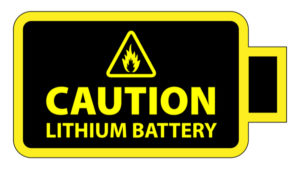
By Zern Liew @ Shutterstock.com
Lithium based batteries are the best mass-production batteries in the world today, but they have a nasty habit of exploding. Can engineers solve the batteries’ problems or is a new approach needed? Bloomberg’s Brian Eckhouse and mark Chediak report:
Another lithium-ion battery has exploded, this time at an energy-storage complex in the U.S.
At least 21 fires had already occurred at battery projects in South Korea, according to BloombergNEF. But this latest one, erupting on Friday at a facility owned by a Pinnacle West Capital Corp. utility in Surprise, Arizona, marked the first time it has happened in America since batteries took off globally.
Local regulators are now demanding answers, companies are investigating the cause, and analysts are wondering: Could more blazes threaten the future of lithium-ion — the only technology that has proven capable of bringing battery storage into the mainstream?
“If these fires continue to occur, it doesn’t bode well for the industry in the short term and the storage market will almost certainly slow down,” said Ravi Manghani, an analyst at Wood Mackenzie Power & Renewables. “As other technologies mature and costs fall, it would certainly erode lithium-ion’s advantage.”
Here’s the issue for lithium-ion: while not inherently dangerous, when handled incorrectly, a potential hazard can occur. The electrolytes used today are flammable in the presence of oxygen, said James Frith, a London-based analyst at BNEF. While batteries are sealed from external sources of oxygen, some cathodes can release oxygen within the cell under high temperatures.
The explosions are coming at an inopportune time for the industry. Nothing has done more to fuel the global battery boom than the plunge in lithium-ion prices. Costs have fallen to a level at which batteries can compete against conventional power plants, and everyone from solar developers to utilities to homeowners are buying them to shore up intermittent renewable energy supplies. Pinnacle West’s Arizona Public Service alone has a goal of adding 850 megawatts of storage by 2025 — enough to light up more than 600,000 homes at once.
Read more here.
